Unit 41: Naturalistic Teaching in ABA Therapy for School Readiness
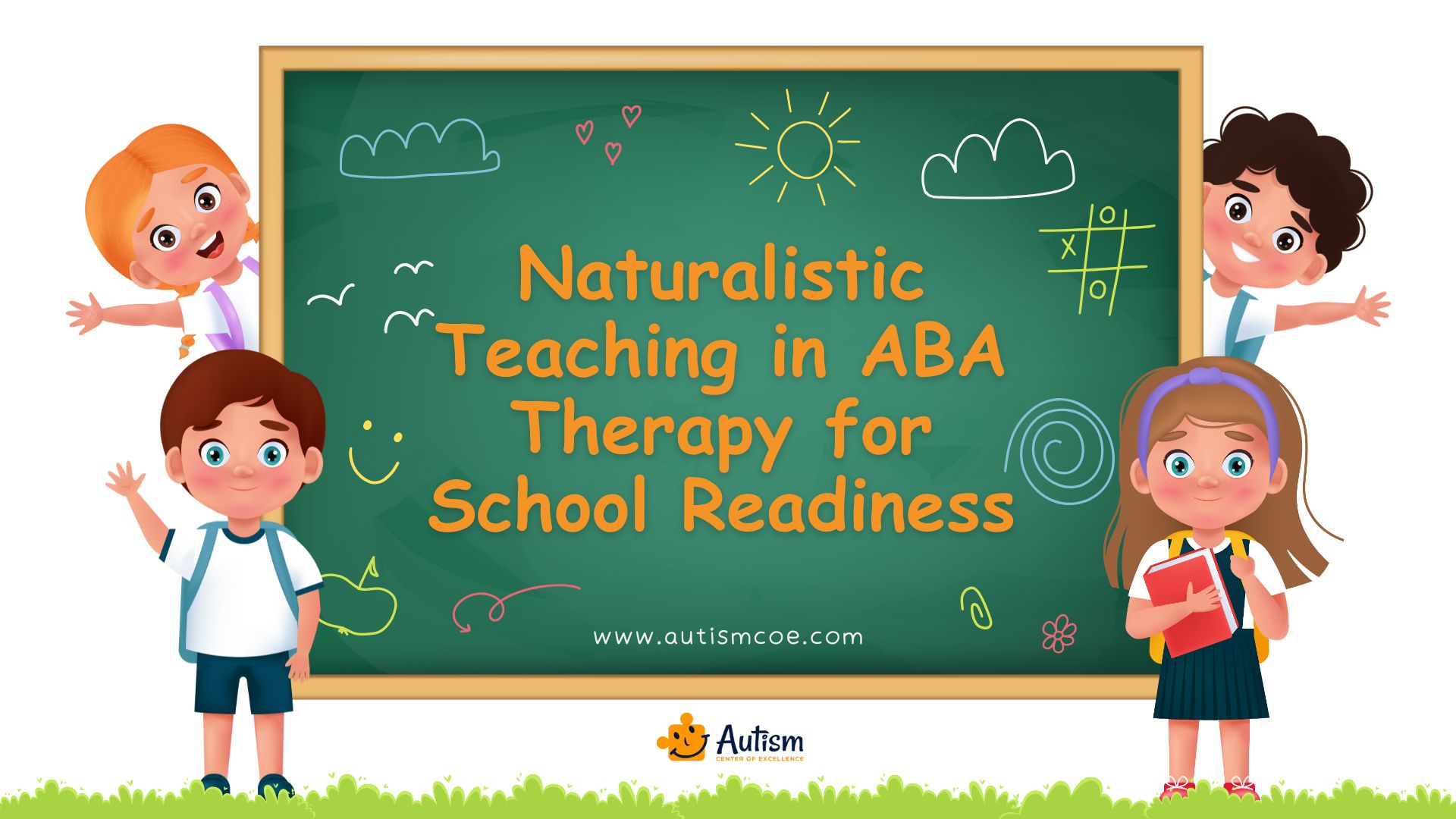
Preparing for school is a big milestone for every child. For children with Autism Spectrum Disorder (ASD) or other developmental challenges, the journey to School Readiness often includes more than just learning ABCs and 123s. This involves developing all the important skills of communication, social interaction, and emotional regulation, all leading to making a child a success in the classroom.
One of the most effective ways to foster these skills is through ABA (Applied Behavior Analysis) Therapy, specifically using naturalistic teaching strategies. It brings learning into real-life scenarios where children feel familiar and highly interested in an environment for developing skills.

What is Naturalistic Teaching in ABA Therapy?
ABA Naturalistic teaching is a child-led non-rigid procedure that bases the learning in the natural context of the situation, as it would happen through play or as a part of routine activities. Unlike Discrete Trial Training (DTT), where learning occurs in a more controlled setting, naturalistic teaching is driven by the child’s interests and choices. This spontaneous learning, coming with real-life scenarios, happens in a less “therapy-like” fashion, which is more of an exploratory, enjoyable experience.
Some of the important characteristics of naturalistic teaching are:
Real-World Learning
Skills are taught in daily-life settings, such as in the home or during play. This makes them relevant and easier to apply in a real-life setting.
Child-Directed
Activities are based on what children want to do or on their interests. Motivation is increased through these means.
Functional Skill Building
Activities are planned to build real-world skills, such as expressing needs, interacting with other people, and regulating feelings.
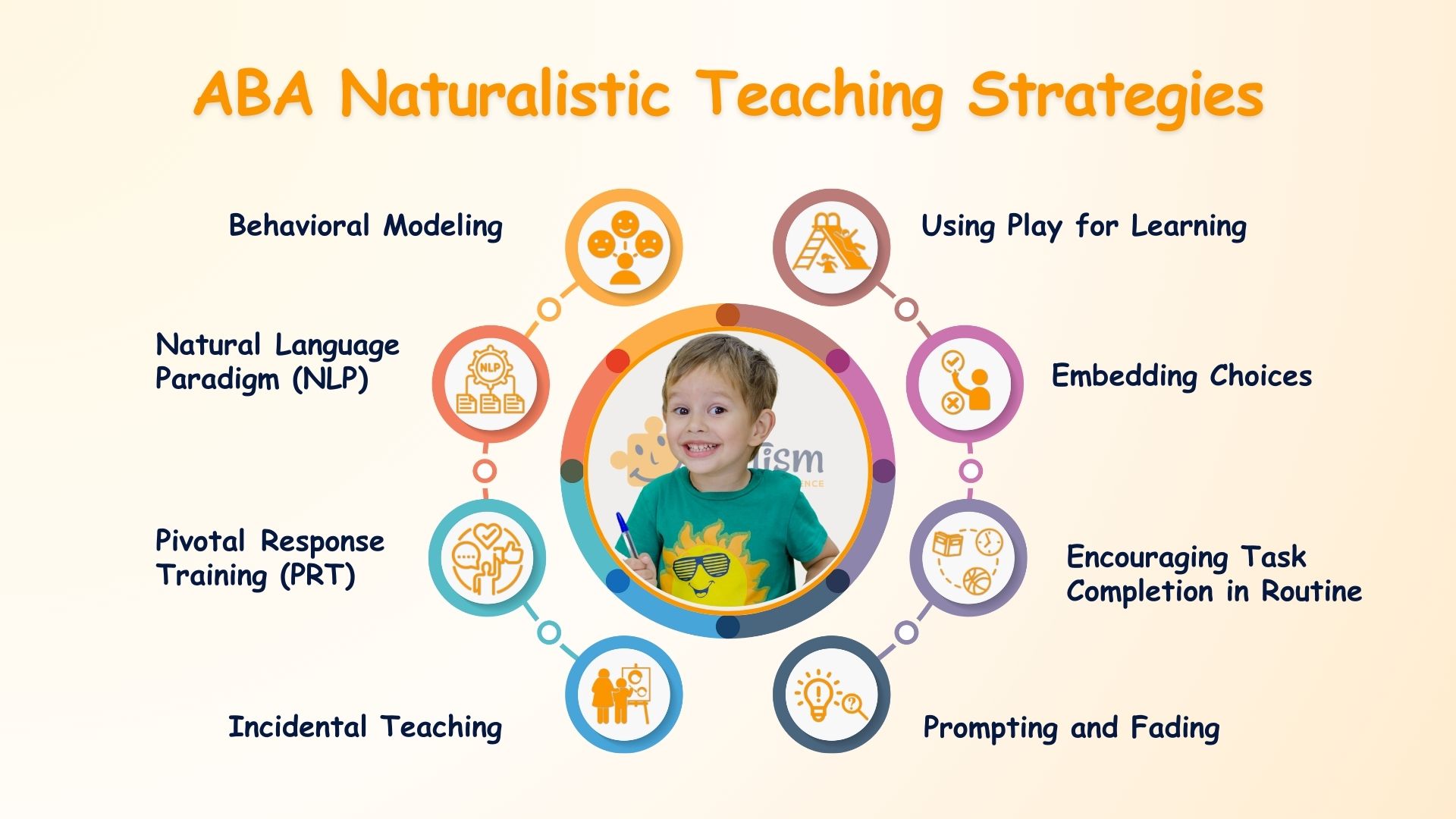
Naturalistic Teaching Strategies for School Readiness
Naturalistic Teaching Strategies in ABA Therapy embed learning opportunities within everyday activities, allowing children to gain essential skills in a comfortable, engaging way. Children with autism and other developmental disorders require these Strategies as Preparation to go to School, in very structured environments. The following are some of the effective naturalistic teaching strategies that foster school readiness:
1. Incidental Teaching
Incidental teaching involves using spontaneous moments to teach a skill. For example, if a child is interested in a toy, the therapist can use this interest as a tool to encourage language skills and ask the child to request or describe the toy. This is an exciting method for fostering curiosity and communication in a low-pressure, natural setting.
2. Pivotal Response Training (PRT)
The focus in Pivotal Response Training is pivotal areas of development for a child, for example, motivation and response to multiple cues rather than concentration on specific behaviors. PRT sets the foundation for core skills that increase communication, Social Interaction, and flexibility to better be able to withstand an ordered school environment.
3. Natural Language Paradigm (NLP)
The Natural Language Paradigm teaches the child to use language in a natural, relaxed, and pleasant way. Through playful, engaging interactions, therapists model and reinforce functional language that the child can use in and out of context. This not only increases their verbal skills but also brings about more natural, spontaneous communication, which is invaluable in facing Social Interactions in a classroom setting.
4. Behavioral Modeling
By modeling appropriate behaviors or responses, therapists and caregivers provide clear examples for the child to imitate. During snack time, for instance, a caregiver might model saying “please” and “thank you,” reinforcing social etiquette and increasing the likelihood that the child will use these expressions in the classroom.
5. Using Play for Learning
Play-Based Learning takes children’s interests and places learning in a fun setting that makes the development of skills an interesting one. Pretend play and building blocks help promote the practice of cooperation, waiting for turns, and proper communication skills all in line with classroom participation. For example, through such engagements, children learn to wait, follow instructions, and interact with their peers and this improves social preparedness.
6. Embedding Choices
Letting children make choices about activities encourages them to become involved and become their self-advocates. Deciding between simple choices, such as what story to read next or what snack to have, helps children to make decisions and experience more control, which aids in school independence.
7. Encouraging Task Completion in Routine Activities
Routine-based tasks, such as preparing meals or organizing toys, teach the child to complete tasks. This is a valuable skill for classroom routines. These activities develop attention and task-completion skills that will be used when participation in group activities at school goes well.
8. Prompting and Fading
Naturalistic teaching prompts the child toward the correct response with verbal hints, gestures, or other forms of prompts. As the child becomes more confident to work independently, prompts fade. The children learn to perform a skill without being dependent on constant help, hence ready for independent participation in school activities.
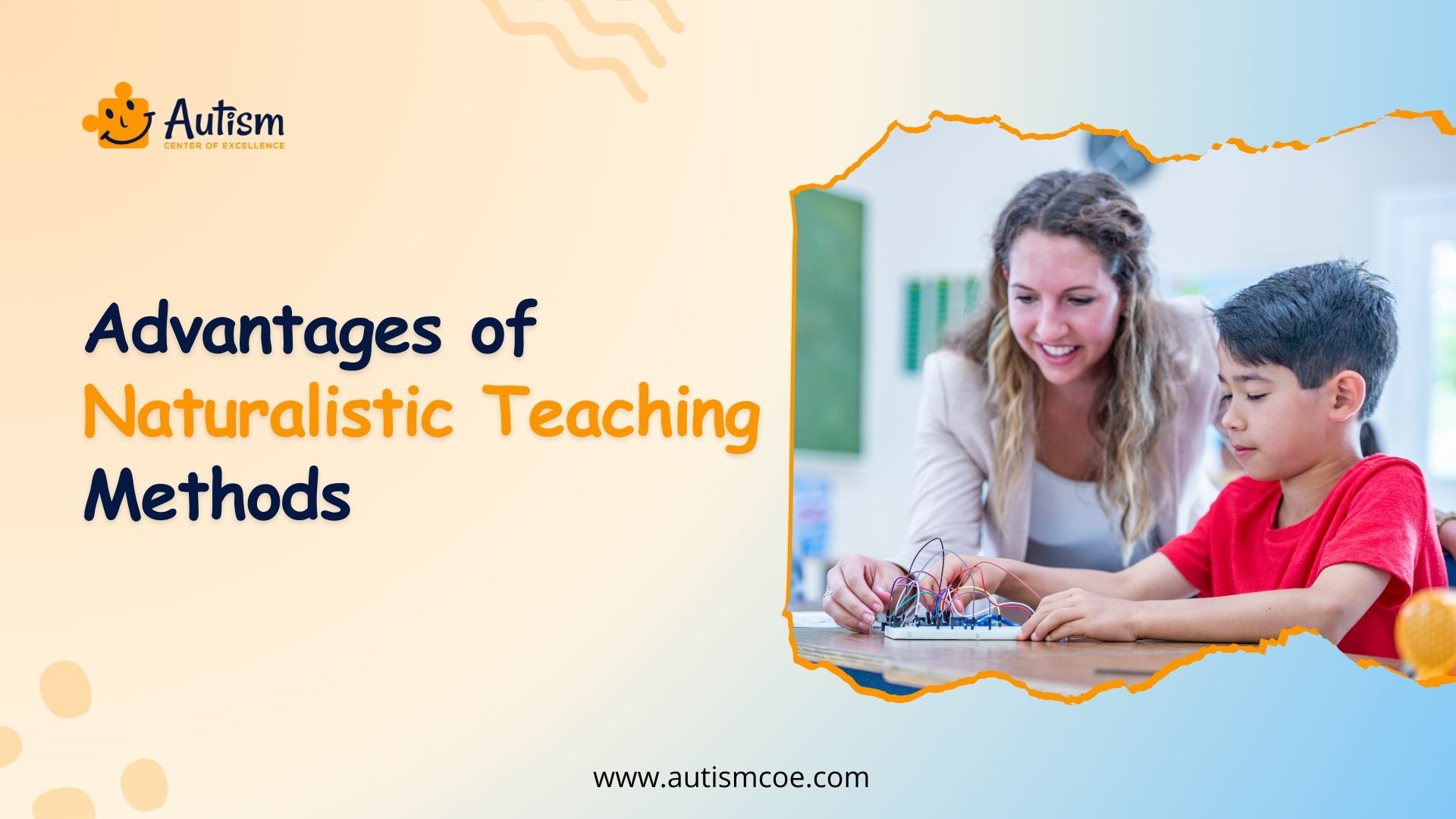
Benefits of ABA Therapy and Naturalistic Teaching for School Readiness
A few benefits of the naturalistic teaching approach found in ABA Therapy which Promotes School Readiness include;
Preparedness for Classroom Structure
This includes teaching children how to respond to routines and expectations while in the classroom and increases the child’s level of comfort in structured situations.
Individualized Support
Due to ABA therapy focusing on every child’s different needs, progress can easily be followed and goals updated according to their specific developmental phases.
Family Involvement
ABA encourages the reinforcement of learning by the family at home. It builds a consistent support system that enhances the retention of learned skills.
Long-term Impact
Skills learned through ABA and naturalistic teaching build a foundation not only for school but also for life in social interactions and personal independence.
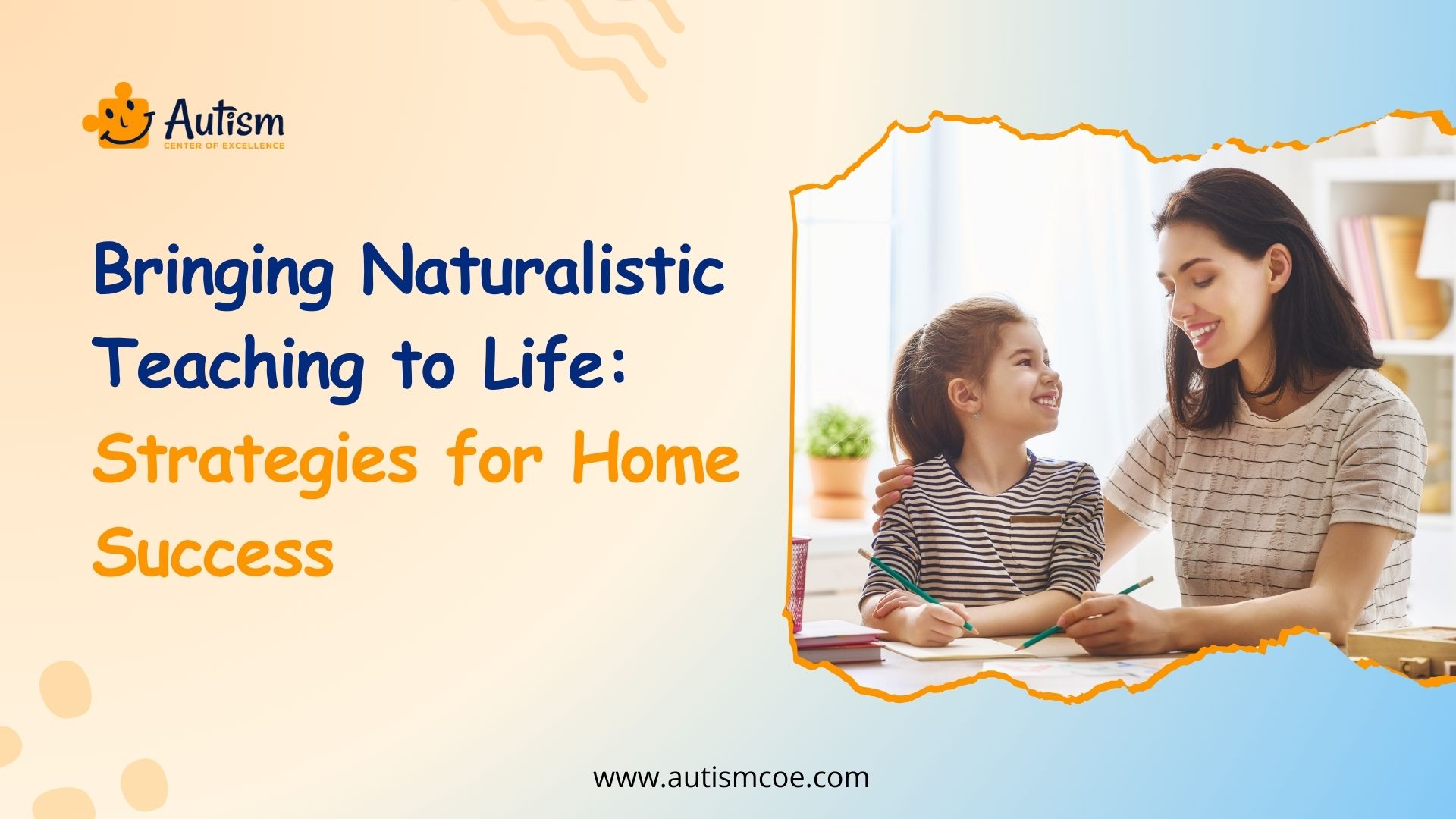
Implementing Naturalistic Teaching Strategies at Home
Parents and caregivers must enforce naturalistic teaching strategies when the child is outside therapy sessions. Here are a few practical tips:
Use Playtime for Language Practice
Encourage your child to name their favorite toys, describe actions, or ask for help during play. This helps build vocabulary and communication.
Set Up Structured Routines
Activities like snack time, bedtime, or getting dressed can teach the child to follow instructions and manage transitions.
Encourage Social Activities
Arrange playdates or group activities so that your child will have the opportunity to practice social skills such as sharing and turn-taking with other children.
Collaborate with Therapists
Work with ABA therapists to learn strategies tailored to your child. This helps create a seamless connection between therapy and home.
Implementing these strategies at home will make the biggest difference in the readiness of your child for school and will provide a supporting, familiar environment for building skills.
Enjoying Reading?
Join Our Weekly Newsletters!
Subscribe now to stay updated with our latest email updates.
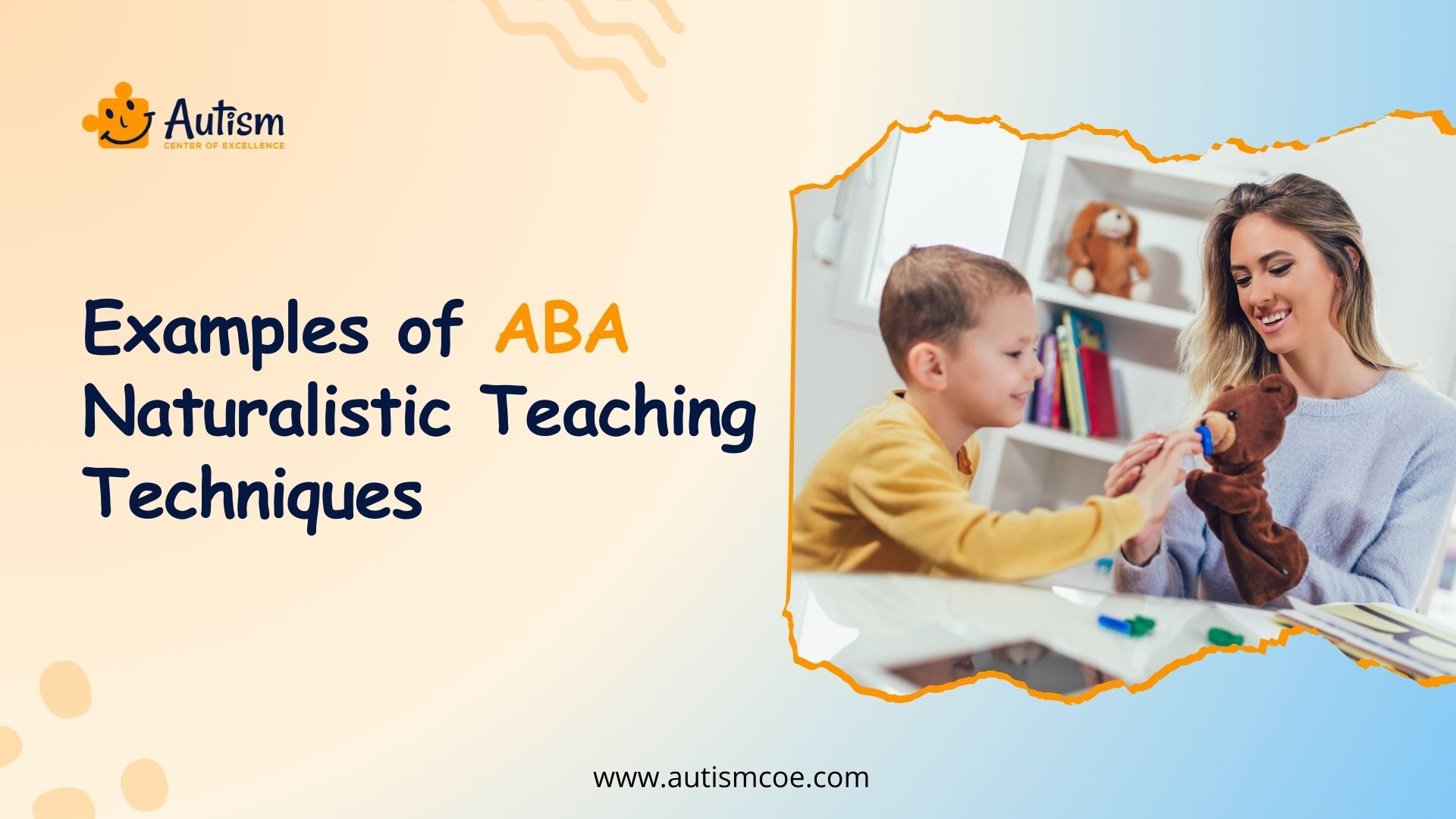
What are Some Examples of Naturalistic Teaching Strategies?
Naturalistic Teaching Strategies are teaching approaches that combine learning by blending activities and interaction that make education more natural or related to children’s everyday happenings.
For instance, asking a child to ask for a favorite object during play is effective because, on top of its communication-generating properties, it provides the child with the power of request. Another one is that the children name objects in their surroundings; this develops vocabulary and observational skills as they go about their interactions with their environments.
Further, role-playing or playing in group socialization can make a vast enhancement in a child’s level of social skills whereby in an engaging way, teaching it how to deal with certain social scenarios.
These strategies not only make learning part of everyday life but also help children build confidence and competence in a supportive, natural environment, ultimately laying a strong foundation for their ongoing development.
Frequently Asked Questions & Answer
How Does Naturalistic Teaching Differ From Other ABA Techniques?
This is mainly different from the more structured methods of ABA such as Discrete Trial Teaching. Most of the activities are child-directed and focused on the child’s interests, making learning an experience more resembling play than actual teaching. This kind of approach nurtures spontaneous interactions, encourages choice, and reinforces motivation.
What Specific Skills Does ABA Therapy Help Develop in Children With Autism?
ABA therapy supports various skills crucial for development, including language and communication, social interaction, self-regulation, motor skills, and adaptive behaviors. Through ABA, children learn to communicate effectively, manage emotions, and interact socially—skills that are foundational for school readiness.
How Does Naturalistic Teaching Improve Communication Skills?
In naturalistic teaching, a child is encouraged to communicate in context. For example, during play, a child might be encouraged to request a toy or explain their favorite activity. These moments enable children to practice both verbal and non-verbal communication in meaningful and enjoyable ways that facilitate more effective learning.
What Role Do Parents Play in Naturalistic Teaching Strategies?
Parents are crucial to reinforcing naturalistic teaching at home. These can then be used through daily routines and can happen through snack time or playtime. This would again create consistency between therapy and the home environment, increasing the strength of, and generalizing, such skills to make them much more reliable for a child.
Conclusion
ABA Therapy, particularly with naturalistic teaching strategies, is a powerful tool for preparing children with developmental challenges for school. It places specific emphasis on core areas like communication and social interaction skills as well as Self-Regulation Skills, which become significant skills for success at school.
At AutismCOE, we utilize naturalistic teaching methods to ensure skill development becomes a familiar part of life for the child, making progress much more inviting and relevant.
This approach helps children practice essential skills in real-life situations, enhancing their language, social interactions, and Self-Regulation abilities, ultimately giving them the confidence and flexibility to thrive in highly structured classroom settings.
Please Note: The content of this blog is for informational purposes only and should not be considered a substitute for professional medical advice, diagnosis, or treatment. Consult a qualified healthcare professional for personalized guidance tailored to your specific situation.

Bhavika Bhasin
Bhavika Bhasin is the Research and Marketing officer at AutismCOE. She works with children and adults with ASD. Her clinical research includes evaluating various available autism screening and diagnosis methods and their efficacy. She is currently developing a novel screening exam that is indicated to be more accurate than the existing available exams. She is also writes articles papers for various publications.

